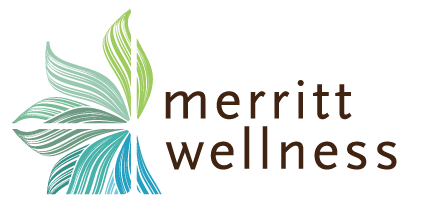It is the rare person these days who doesn’t have a concern about cancer.
Between the constant headlines, pink ribbons on everything from planes to lapels, to hearing that Aunt Stacy was just diagnosed, it is impossible to NOT be aware of cancer’s presence.
And we SHOULD be paying attention—the current statistic is that 1 in 3 people will get cancer in their lifetime.
The thing is, we don’t need more “awareness”—what we need is to take steps toward protecting ourselves from getting cancer.
Because, speaking honestly, what are you doing to actually prevent getting a cancer diagnosis? Or if you were diagnosed in the past, what actions are you taking so that you don’t get it again?
If you’re like most people, you’re not doing much in the way of prevention—mostly we just hope to escape a diagnosis.
It’s not that you aren’t trying, necessarily—it’s rather that it’s not really clear what to do.
You’re certainly not going to get advice from your MD about what to do, other than getting regular mammograms or PSA tests (both of which have been shown ineffective as screening tools, but more on that later).
Which leaves you with the internet, where an article out of context will make you think drinking 6 cups of coffee will prevent cancer (1) when honestly, there are better and more effective things to do first.
Let’s first deal with the misperception that screening = prevention
Prevention is what you do and the actions you take so that when you get screened, nothing is found.
Screening just finds, or doesn’t find, cancer. But right there we have a problem, because mammograms and PSA tests are hyped as the actions you should be taking to prevent cancer or catch it early enough so that you can do something about it.
So first, let’s look at mammograms.
Back in 2009, the U.S. Preventive Task Force Services looked at all the evidence and concluded mammograms should not be started before age 50 because too many false-positives were causing over-treatment and harm.
The actual numbers they saw? That one cancer death is prevented for every 1,904 women age 40 to 49 who are screened for 10 years and in the process will generate 1000 false-positives.
On average, 10% of women will be recalled from each screening examination for further testing, and only 5% of women recalled will have cancer. (2)
This study looked at the cumulative possibility of getting a false positive and concluded if you started mammograms at age 40 and did them for 10 years, your chances of getting that false positive were 61.3%. (3)
And these false positives are significant, as they often lead to over-treatment: surgical deformity or toxicities from radiation therapy, hormone therapy, or chemotherapy, lymphedema, and effects of therapeutic radiation like new cancers, scarring, or cardiac toxicity.
Never mind the level of anxiety that occurs when you get called back because something “looked suspicious”.
Just in case you were thinking that you’re SURE you know an exception, consider that you probably don’t.
Women who believe “a mammogram saved my life” have not, in fact, been spared—this study published in 2011 concluded that instead, women are diagnosed early, or over-diagnosed. (4)
This might be why the Swiss Medical Board is considering abolishing mammograms as a screening tool (5), that in 2015, the American Cancer Society started backing off its requirements that women have mammograms every year, and that ductal carcinoma in situ (Stage 0) is going to be renamed as something without the word “cancer” in it, because it’s being over-treated and shouldn’t be considered cancer yet. (5).
In September 2016, the U.S. Preventive Task Force Services, who had the original recommendations that were based on actual research evidence (unlike the constant “advice” you get at your yearly physicals), reiterated its recommendations (6), which were these:
• Don’t get a mammogram before the age of 50.
• After the age of 50, only get them every 2 years, for a total of 10.
• Don’t continue to screen after the age of 74.
The exceptions they mentioned were these: “These recommendations apply to asymptomatic women aged 40 years or older who do not have preexisting breast cancer or a previously diagnosed high-risk breast lesion and who are not at high risk for breast cancer because of a known underlying genetic mutation (such as a BRCA1 or BRCA2 gene mutation or other familial breast cancer syndrome) or a history of chest radiation at a young age.”
If you’re not in these categories, and are wondering what to do instead, just hang on 🙂 I’ll get to that.
The PSA. test, as another example, has also been shown to not save lives, and leads to increased testing and treatments, and needless pain, impotence, and incontinence.
The U.S. Preventive Task Force Services in 2012 gave the PSA test a “D” (just like grades given in school) which means, “There is moderate or high certainty that the service has no net benefit or that the harms outweigh the benefits.” (7)
Let’s look at a few facts
First, be clear that cancer is a “modern” disease, and traditional cultures showed little to no cancer.
Dr. Albert Schweitzer studied over 10,000 traditionally-living Gabon natives in West Africa and never found cancer.
Dr. Eugene Payne studied approximately 60,000 people over 25 years in Brazil and Ecuador and found no incidence of cancer.
The Hunza in northern Pakistan, the Inuit Eskimos—all these cultures, back when they ate their traditional diet, basically had no incidence of cancer, and ALL of these cultures have seen a huge increase, rivaling our own rates, after Western foods like refined oils, refined flours, processed foods and sugar were introduced into their diets.
Secondly, deaths from cancer (the only reliable statistic), have basically stayed unchanged, dropping only 5% since 1950 and in some cases rising (like in lung cancer).
Despite the hype in the news, giving people the impression that finding it early means they’ll be fine, rates haven’t changed for most cancers, and have gone up for lung cancer (substantially, in that case), prostate, and breast as this graphic (8) shows.
It is often argued that since we have more testing, we therefore have more diagnoses, but this is exactly why death rates are the only reliable measure.
Thirdly, as I have mentioned, the screening for cancer leaves quite a bit to be desired.
Leaving mammograms and PSA screening out of it, you don’t want to wait until you or your doctor literally feels something abnormal in breast or prostate tissue—that’s WAY later than you want to find a cancer.
It’s helpful to think of breast cancer (and most cancers) in four categories
- First, there are the slow-growing cancers that would be found and treated with or without screening.
- Second, there are the aggressive cancers that are deadly regardless if they are found early or late. Women in either of these groups are not helped by screening.
- Then there are innocuous cancers that wouldn’t have become anything dangerous, but because it was a dot on a mammogram, it’s treated—these women are considered over-diagnosed, meaning they are treated unnecessarily and are harmed by screening.
- Then the last group are the women whose lives ARE saved by screening, who find a deadly cancer in time for treatment to be effective, but clinical data says this is less than one woman in a thousand screened over 10 years.
If you’re looking for an alternative to mammograms, you might try thermography.
Thermography takes a temperature picture of your breast tissue (or other tissue, if you choose) and looks for changes in temperature from one area to the next.
When a cancer starts to grow, it needs extra blood flow (called angiogenesis) which therefore increases temperature and that’s what thermography is looking for.
It is estimated that thermography can find cancers and potential cancers up to eight years in advance of mammograms. There is no radiation and no uncomfortable squashing—it is totally painless and non-invasive.
It’s also FDA registered since 1982. A specialized picture taken and analyzed by medical doctors who are also board certified clinical thermologists, specially trained to analyze these images.
Just Google “thermography” to find a center in your area.
Where do cancers get their start?
Remember that people have abnormal cells quite often, every day—not surprising if you have trillions of cells.
The estimation is by age 40, about 40% of us have microscopic cancers, and by age 70, it’s 100% of us.
Without blood and glucose, these pre-pre-cancers (my description) can’t grow. But add in all the sugar we eat, day after day, and you are feeding those cells.
Triggers that can cause cells to become abnormal and/or cancerous can be narrowed down to these four areas:
• Environmental/toxic overload (like too many chemical in food, water, packaging, etc.)
• Hormonal imbalances (too much estrogen, for example)
• Nutritional insufficiencies (low vitamin D, or low folate)
• Mental/emotional stresses (high cortisol)
Some things may have happened inadvertently, like radiation exposure you didn’t know about or chemicals in drinking water.
But many of us do things day after day that stress our systems, like microwave in plastic containers, drink water out of plastic bottles, expose ourselves to chemicals and whatever is in processed foods, and eat way too much sugar and carbohydrates.
We don’t monitor our vitamin D levels to make sure they’re sufficient, we take synthetic supplements that increase our chances of cancers (see this video I did on this topic), we don’t eat enough nutrient-dense food… the list goes on and on.
The sugar issue is a big deal
Back in the first half of the last century, the big theory about cancer was from a researcher named Otto Warburg.
He believed cancer needed glucose to survive, and that to treat cancer, you had to essentially starve it to death. His discovery was called the “Warburg Effect”.
Unfortunately, right after that, Watson and Crick discovered DNA and from that point forward, we tried to treat cancer from the point of view of genetics.
We haven’t been very successful with that, and now current research is returning back to Otto Warburg and what cancer cells need for fuel.
Read this article from May 2016 in the NY Times about this—fascinating!
It’s well known that cancer cells need glucose because that’s how PET scans work—they inject radioactive glucose in a patient. Because cancer cells have faster metabolisms than other cells, they uptake the glucose and then they scan you to see where it went, showing doctors where the cancer has metastasized.
Dr. Craig Thompson, researcher and president of New York’s Memorial Sloan-Kettering Cancer Research Center, believes many pre-cancerous cells would never become malignant if it wasn’t for the constant exposure to insulin and needing glucose for their metabolism.
Lewis Cantley, director of the Cancer Center at Harvard Medical School, says that up to 80% of all human cancers have glucose and insulin as instigating factors.
This is not new information but people often do not make changes until AFTER they get a diagnosis, when it’s substantially less effective.
The estimation is that by the time something atypical or cancerous is seen on a mammogram, the woman has had that abnormality on average for 8 years. And if she’s like most people, she’s been feeding it sugar all that time.
This always leads to the question: what is a “reasonable” or “moderate” amount of sugar? And to be honest, I don’t know.
The average person today eats between 150 and 180 pounds of sugar a year. In the year 1700 it was 4 pounds.
Even if you cut your intake in half, it’s probably still more than your body can handle, because we don’t know what a “safe” amount of sugar is for human health.
My basic recommendations are to first notice where you have sugar.
For most of our patients, it’s every day and multiple times a day. Is it in your coffee every morning? Do you have a cookie every day as a snack? Dessert? Then try using some substitutes like xylitol or stevia in places where you can, like your coffee.
Then try going every other day without sugar.
Try drinking flavored sparkling waters instead of soda. Try low-carb desserts, like what’s on our Pinterest page. There’s always natural alternatives to using sugar, and many of them will amaze you.
In regards to nutritional deficiencies, there are a few that specifically impact cancer
Vitamin D is the most well-known, and we recommend the D3 that you take be combined with K2, which is another fat-soluble vitamin.
Most health professionals agree that 5,000 IU of D3 per day is helpful for prevention. Taking your vitamin D with a meal that has some fat will help with absorption.
Folate and folic acid are also very helpful for prevention. Folate comes from the word “foliage” meaning green vegetables, so unless you eat a lot of those, you might need to supplement.
The normal daily supplement dose is between 400 mcg and 800 mcg. It’s actually dangerous to take overly high levels of folate or folic acid, as high amounts tend to encourage cancer growth, so don’t take more than the normal amount.
The biggest impact here is consistent lower dose over the long term—that’s how you get your body back in balance. Not just for folic acid, but for any nutrient.
“Low dose, long term” is what they say in research.
Herbal Supplements and Cleansing
There’s a lot of evidence that herbal supplements like turmeric, green tea, resveratrol, etc. are protective against cancer, but the whole key is what I just said—low dose, long term.
It doesn’t do any good to take large amounts of anything in hopes to “catch up”.
You will get much more benefit by taking herbs if first, you consult with a qualified herbalist. They can explain to you the differences in quality, since you don’t want to take something long term that was as worthwhile as dust.
Secondly, a qualified herbalist can help narrow down and clarify which herbs will give you the most benefit.
You might also consider doing detox cleanses—one or two a year (obviously talk to a medical professional who knows about them before you do one).
I mean a cleanse, not a fast, and something focused on the liver, not just on the colon.
The liver is responsible for conjugating and removing toxins and hormones, and most of us don’t have NEARLY the nutrition necessary for our liver to do its job.
Do you eat plenty of cruciferous vegetables? That means more than twice a week. And are you sure they’re organic and nutrient-dense?
Cruciferous vegetables in particular are effective at helping the liver to remove excess estrogen, and excess estrogen is a huge factor in both breast and prostate cancer. Not to mention the day-to-day toxins we get in the water and air—we probably can’t take enough steps to nutritionally support the liver, but doing a cleanse with some concentrated supplementation is a very solid place to start.
And not to beat a dead horse, but exercise is considered probably the most effective preventive step to take against cancer and honestly, nearly any malady we have.
Read this article “Closest Thing To A Wonder Drug? Try Exercise” from the New York Times.
No matter where your health is at this moment, it’s not too late to take steps
Maybe it’s taking on sugar. Maybe it’s drinking more green tea, exercising a teeny bit more, or taking some supplements.
We can help you tailor a plan, if that’s what you need.
You do NOT have to fall prey to the 1-in-3 statistic. If you want to take responsibility for your own health, and greatly decrease your chances of a diagnosis, these recommendations would be a good foundation and starting point.
________________
References:
1. May 2011. Daily Mail.com “Six cups of coffee a day ‘can slash prostate cancer risk” Retrieved 9-30-16 https://www.dailymail.co.uk/health/article-1388200/Coffee-cuts-prostate-cancer-risk-drink-6-cups-day.html
2. Rosenberg RD, Yankaskas BC, Abraham LA, et al.: Performance benchmarks for screening mammography. Radiology 241 (1): 55-66, 2006.
3. Hubbard RA, Kerlikowske K, Flowers CI, et al.: Cumulative probability of false-positive recall or biopsy recommendation after 10 years of screening mammography: a cohort study. Ann Intern Med 155 (8): 481-92, 2011
4. Arch Intern Med. Published online October 24, 2011. doi:10.1001/archinternmed.2011.476
5. Biller-Andorno, Nikola, and Peter Jüni. “Abolishing mammography screening programs? A view from the Swiss Medical Board.” New England Journal ofMedicine 370.21 (2014): 1965-1967.
5. Narod, Steven A., et al. “Breast cancer mortality after a diagnosis of ductal carcinoma in situ.” JAMA oncology 1.7 (2015): 888-896.
6. https://www.uspreventiveservicestaskforce.org/Page/Document/RecommendationStatementFinal/breast-cancer-screening1 Retrieved 9-30-16
7. https://www.uspreventiveservicestaskforce.org/Page/Document/UpdateSummaryFinal/prostate-cancer-screening?ds=1&s=prostate Retrieved 9-30-16
8. https://www.nytimes.com/interactive/2009/04/23/science/0424-cancer-graphic.html Retrieved 9-30-16


